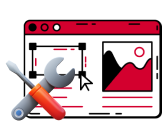We’re all seeing it—digital products are everywhere. From professionals in need of the latest software to creatives looking for unique design assets, and entrepreneurs on the hunt for new tools to grow their businesses. The demand for digital products is booming, and people want them fast, easy, and accessible. That’s where a digital product marketplace comes in.
This surge in demand is an open invitation for everyone to jump in and start something big. But how do you take advantage of this opportunity? What steps are necessary to build a successful digital product marketplace? Let’s dive into the details, keeping it practical and actionable, so you can start turning this opportunity into reality.
What is a Digital Product Marketplace?
Simply put, a digital product marketplace is like a giant online shopping mall, but instead of selling physical goods, it's all digital—think e-books, software, online courses, graphics, or music. It’s like Etsy or Amazon, but everything is delivered instantly to your devices. You’re not just selling your own stuff; you’re creating a space where other creators can sell their goods too. And here’s the best part: every time someone makes a sale, you earn a commission.
Why Build a Digital Product Marketplace? The Real Value
You might be wondering, “Why should I invest my time and energy into building a digital product marketplace?” The benefits are substantial, and they go beyond just earning passive income:
- Low Overhead, High Potential: You don’t have to worry about inventory, shipping, or storage. This means your initial costs are much lower, making it easier to start and grow your business without significant upfront investment.
- Scalability: You can continually add new products and sellers, expanding your offerings without the constraints that a brick-and-mortar store would face.
- Global Reach: The beauty of a digital marketplace is that it’s accessible to anyone with an internet connection. You can attract sellers and buyers from around the world, giving you access to a vast audience that’s constantly growing.
- Diverse Income Streams: By hosting a variety of digital products, you’re not putting all your eggs in one basket. If one product or category slows down, others can pick up the slack, ensuring a steady flow of income.
- Passive Income Potential: Once your marketplace is up and running, it can generate income with minimal ongoing effort. With automation tools, you can manage many aspects of the platform passively, allowing you to focus on other pursuits or simply enjoy more free time.
Steps to Launching Your Digital Product Marketplace
So, how do you turn this vision into reality? Here’s a step-by-step guide to building your digital product marketplace:
1. Find Your Niche and Know Your Audience
The first step is deciding what type of digital products you want to offer. Maybe you’re passionate about digital art, or perhaps you have experience in software development. Whatever it is, pick a niche that aligns with your interests and expertise. This will not only make the process more enjoyable but also position you as an authority in that space.
Next, think about your target audience. Who are they? What are their needs and pain points? Understanding your audience will help you tailor your marketplace to meet their specific needs, making it more attractive and user-friendly.
2. Choose the Right Platform
Unless you’re a coding wizard, building a marketplace from scratch can be daunting. But don’t worry—there are plenty of ready-to-use digital product marketplace platforms that offer everything you need to get started quickly.
Look for platforms that are easy to use, scalable, and flexible. Think of it like setting up a shop on Main Street without having to build the street yourself.
3. Set Up Secure Payment Processing
A smooth payment process is critical for any online marketplace. Make sure your platform supports multiple payment gateways like PayPal, Stripe, or credit cards, so you can accommodate buyers from different regions. The checkout process should be seamless and secure, instilling confidence in your customers and making it easy for them to complete their purchases.
4. Attract Sellers and Build a Community
Your marketplace’s success hinges on the quality and variety of products offered. To attract sellers, offer them incentives like low fees, marketing support, or exclusive features. Start by reaching out to potential sellers in your niche and showing them the benefits of joining your platform.
Creating a sense of community is also essential. Engage with both sellers and buyers through forums, social media, or newsletters. A vibrant community encourages loyalty, repeat business, and word-of-mouth referrals.
5. Implement Effective Marketing Strategies
Once your marketplace is live, the next challenge is driving traffic to it. This is where a mix of marketing strategies comes into play:
- SEO: Optimize your site for search engines to increase organic traffic. This involves using the right keywords, creating quality content, and ensuring your site is user-friendly.
- Content Marketing: Blog posts, tutorials, and product reviews can help you attract and educate your audience while positioning your marketplace as a go-to resource.
- Social Media: Platforms like Instagram, Twitter, and Facebook can help you reach a wider audience and engage with your community in a more personal way.
- Paid Advertising: If you have the budget, consider Google Ads or Facebook Ads to drive targeted traffic to your marketplace quickly.
Common Challenges and How to Overcome Them
Like any business, building a digital product marketplace comes with its challenges. But with the right strategies, these can be managed effectively.
1. Attracting Quality Sellers
One of the first hurdles is attracting sellers who offer valuable products. To overcome this, make your platform appealing by offering competitive commissions, providing marketing support, and building a strong community.
Consider reaching out directly to potential sellers and showing them the benefits of joining your marketplace. Testimonials and case studies can also help build trust and credibility.
2. Ensuring Platform Security
Security is a non-negotiable aspect of running a digital marketplace. Ensure that your platform is protected against data breaches and fraud. Regularly update your software, use SSL certificates, and consider two-factor authentication to enhance security.
Working with a trusted platform like InternetKeeda, which prioritizes security, can also give you peace of mind.
3. Managing Growth
As your marketplace grows, so will the complexity of managing it. Automate where possible—use tools for order processing, customer support, and marketing. You might also consider hiring a team as your business expands to ensure smooth operations.
4. Competing with Established Marketplaces
It can be intimidating to compete with established giants, but remember, there’s room for everyone. Focus on your niche and what makes your marketplace unique. Whether it’s exclusive products, exceptional customer service, or a strong community, use these elements to carve out your place in the market.
Want a simpler, faster way to launch your marketplace?
Great! But maybe you’re also thinking, “This sounds like a lot of work.” Well, it doesn’t have to be. With InternetKeeda, launching your digital product marketplace can be a breeze
InternetKeeda offers a one-stop solution with over 100,000 Plus digital products—from software to hosting solutions—ready for you to sell. No need to stress over finding products or vendors. You get to focus on building your brand and making sales.
Here's what InternetKeeda offers:
Become a Reseller: Access our suite of 20,000 products and earn commissions on every sale. It's an effortless way to start generating income without needing to create products yourself.
White-Label Your Own Business: Want to create something under your brand? With our white-label option, you can build your own marketplace using our extensive product range but under your brand name. Set your prices, create your brand identity, and start earning.
Conclusion
Building a digital product marketplace is not just an opportunity—it’s a chance to create something that can change your financial future. With the right approach, you can establish a business that not only meets the growing demand for digital products but also generates a steady income stream.
InternetKeeda is here to support you on this journey. With our comprehensive range of products, white-label options, and expert support, you have everything you need to succeed in building your own digital marketplace.
So, why wait? The sooner you start, the sooner you can begin earning. Visit InternetKeeda today to learn more and get started on your journey to digital success.
1. Do I need technical skills to create a digital product marketplace?
Not necessarily. Platforms like InternetKeeda offer ready-to-use software that requires little to no coding knowledge. You can launch your marketplace quickly, even without technical expertise.
2. How do I attract sellers to my marketplace?
Offer competitive commission rates, marketing support, and a strong community. Highlight the benefits of your platform and use testimonials to build trust.
3. How do I handle payments and transactions?
Most marketplace platforms come with built-in payment processing systems that support various gateways like PayPal, Stripe, and credit cards. Ensure the platform you choose offers secure and user-friendly payment options.
4. What marketing strategies should I use to promote my marketplace?
Use a combination of SEO, content marketing, social media marketing, and paid advertising. Regularly monitor your efforts and adjust your strategies based on performance data.
5. How can I differentiate my marketplace from competitors?
Focus on your niche, offer unique value propositions, and develop a strong brand identity. Whether it’s through exclusive products, superior customer service, or a strong community, leverage these elements to stand out from the competition.
 Bundles
Bundles Flash Sales
Flash Sales






















Comments (0)